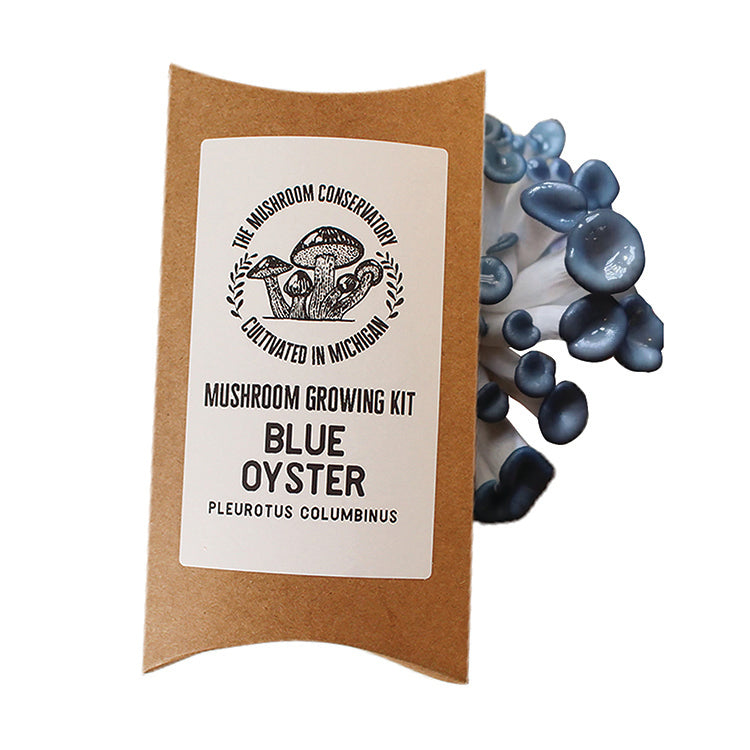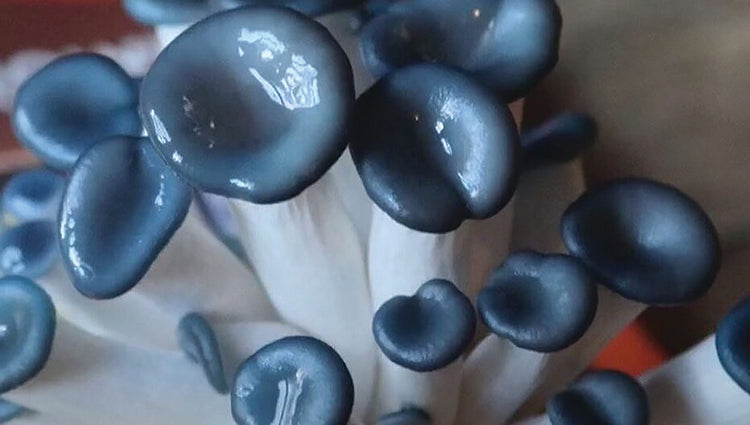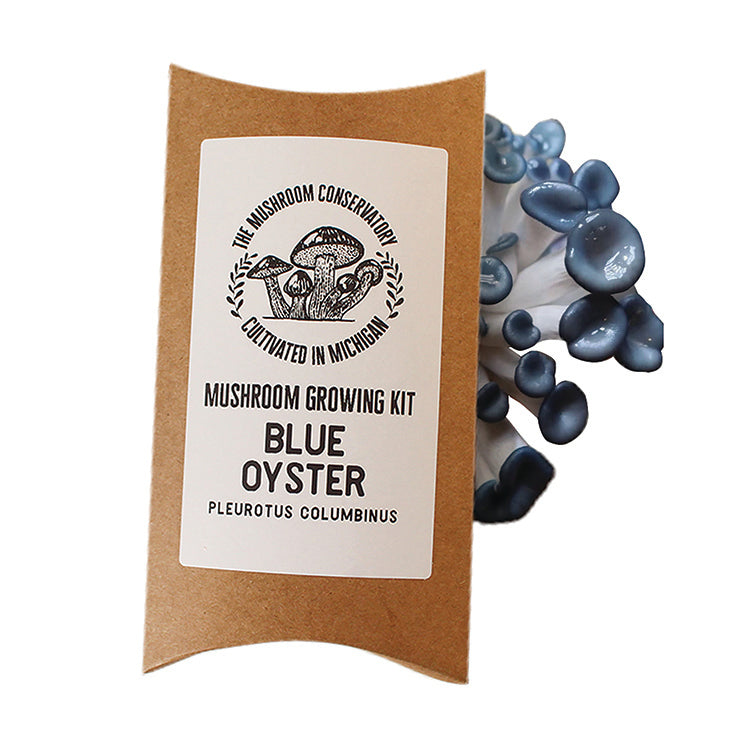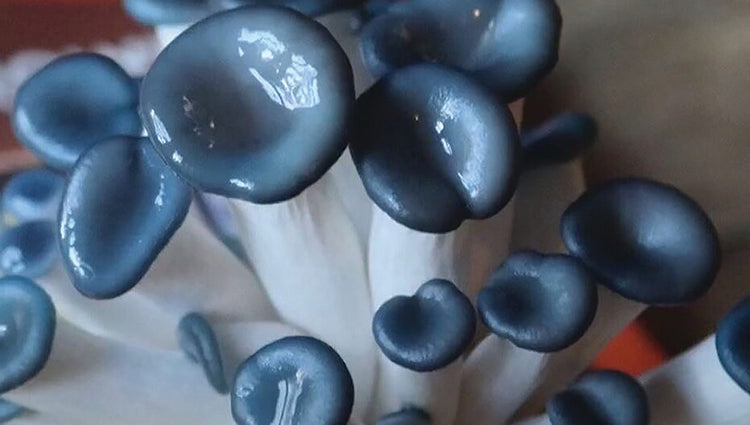BLUE OYSTER MUSHROOM GROWING KIT
Members save: $1.01 (5.1%)
List Price:
Couldn't load pickup availability
- A culinary favorite
- Nutrient-rich
- Delicate and buttery
Blue Oyster mushrooms were first documented in 1775 by Nikolaus Joseph Freiherr von Jacquin, a Dutch scientist who studied medicine, chemistry, and botany and traveled the world gathering samples and specimens of his discoveries.
Blue Oysters are particularly appreciated for their density and can be used quite successfully as a replacement for meat in many recipes. They are especially wonderful sauteed in butter.
Blue oysters have a delicate, buttery taste with a dense texture that is reminiscent of something somewhere between chicken and crab. They are happiest at 60 to 85 degrees Fahrenheit. Colors are brighter at cooler temperatures, while fruits are larger at hotter temperatures.
- Class: Agaricomycetes - Parasitic, pathogenic, symbiotic, or saprotrophic; most are terrestrial, with few aquatic members; all are mushroom-forming; spore cap has openings; contains 17 orders.
- Order: Agaricales - Most are saprotrophic, some are parasitic on plants (causing root rot), others are mycorrhizal; basidia produced in layers (hymenia) on the underside of fleshy fruiting bodies (basidiocarps), in tubes (boletes), or on gills (mushrooms).
- Family: Pleurotus small to medium-sized mushrooms which have white spores; gilled mushrooms
- Species: P. ostreatus
This kit is designed to help you learn to grow mushrooms at home without any specialized equipment. They are fairly easy to work with and include instructions for growing them on a bag of precooked rice at home or a bucket of straw if you’d like to grow a lot of them.
This is a pretty flexible project age-wise, with the only caveat being that you’ll want adult supervision for the inoculation process for young students so that no fingers get poked. It’s an indoor project. You’ll need a bag of pre-cooked rice, rubbing alcohol, and some paper bandage tape.
Each set includes detailed instructions, your mushroom culture, and a fungi word search. It’s a great project for anyone with a love of plants, to do as part of a nature study, or simply because they are beautiful and fascinating. And they’re great for cooking with/eating or just looking at if you’re the non-mushroom-eating type.



